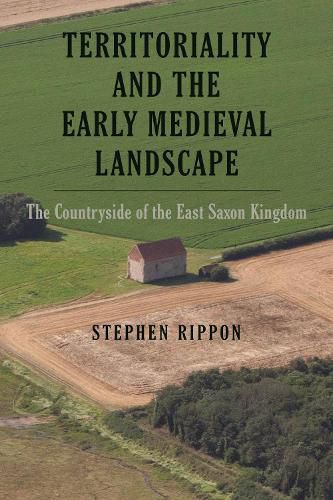Readings Newsletter
Become a Readings Member to make your shopping experience even easier.
Sign in or sign up for free!
You’re not far away from qualifying for FREE standard shipping within Australia
You’ve qualified for FREE standard shipping within Australia
The cart is loading…






All communities have a strong sense of identity with the area in which they live, which for England in the early medieval period manifested itself in a series of territorial entities, ranging from large kingdoms down to small districts known as pagi or regiones. This book investigates these small early folk territories, and the way that they evolved into the administrative units recorded in Domesday, across an entire kingdom - that of the East Saxons (broadly speaking, what is now Essex, Middlesex, most of Hertfordshire, and south Suffolk). A wide range of evidence is drawn upon, including archaeology, written documents, place-names and the early cartographic sources. The book looks in particular at the relationship between Saxon immigrants and the native British population, and argues that initially these ethnic groups occupied different parts of the landscape, until a dynasty which assumed an Anglo-Saxon identity achieved political ascendency (its members included the so-called Prittlewell Prince , buried with spectacular grave-good in Prittlewell, near Southend-on- Sea in southern Essex). Other significant places discussed include London, the seat of the first East Saxon bishopric, the possible royal vills at Wicken Bonhunt near Saffron Walden and Maldon, and St Peter’s Chapel at Bradwell-on-Sea, one of the most important surviving churches from the early Christian period.
$9.00 standard shipping within Australia
FREE standard shipping within Australia for orders over $100.00
Express & International shipping calculated at checkout
All communities have a strong sense of identity with the area in which they live, which for England in the early medieval period manifested itself in a series of territorial entities, ranging from large kingdoms down to small districts known as pagi or regiones. This book investigates these small early folk territories, and the way that they evolved into the administrative units recorded in Domesday, across an entire kingdom - that of the East Saxons (broadly speaking, what is now Essex, Middlesex, most of Hertfordshire, and south Suffolk). A wide range of evidence is drawn upon, including archaeology, written documents, place-names and the early cartographic sources. The book looks in particular at the relationship between Saxon immigrants and the native British population, and argues that initially these ethnic groups occupied different parts of the landscape, until a dynasty which assumed an Anglo-Saxon identity achieved political ascendency (its members included the so-called Prittlewell Prince , buried with spectacular grave-good in Prittlewell, near Southend-on- Sea in southern Essex). Other significant places discussed include London, the seat of the first East Saxon bishopric, the possible royal vills at Wicken Bonhunt near Saffron Walden and Maldon, and St Peter’s Chapel at Bradwell-on-Sea, one of the most important surviving churches from the early Christian period.